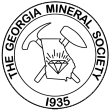"Image Superposition"
by
Dave Babulski, Ed.D.
("Tips and Trips", Vol. XXXIII/7, July 2004, page 10.)

In this installment of the Micromount Corner, I want to share another way of enjoying mineral micromounts. We know that one of the attractions of mineral micromounts is the perfection of crystal form and presence of subtle crystal sub-faces that are typically washed out as the crystal grows larger. There is a way that you can capture the subtlety and perfection of crystal form in mineral micromounts that also harkens back to a time before mineralogists had photography as a tool. This technique is called "Image Superposition". The technique takes a little practice but once mastered some amazing crystal drawings can be created. In that time before photography, scientists used a device called a "Camera Lucida" to draw what they saw in the microscope. A Camera Lucida (sometimes this device is called a “Drawing Tube”) is a mirror affixed to the microscope such that images reflected from the mirror are directed into the right stereomicroscope ocular. Meanwhile, the left microscope ocular is directed through the microscope objective at the specimen under observation. In the brain, the image from the mirror and the image from the specimen are superimposed on top of each other. If a sheet of paper is placed under the mirror, the image of the specimen will appear to float on the surface of the paper. It is then a simple matter of following the outlines of the specimen to create a very accurate drawing of the specimen. Unfortunately a microscope fitted with a Camera Lucida is not an inexpensive item. What I will share with you is a very inexpensive way to create a "virtual" Camera Lucida by using one of the oculars in a stereomicroscope, a sheet of paper and a good light source. This arrangement will enable you, with practice, to create some amazing crystal drawings. The advantage of this technique is the ability to capture the crystal form with a very high degree of accuracy without the cost of photographic equipment. There are two basic optical arrangements for stereomicroscopes, the straight through ocular to objective arrangement and the tilted ocular through prisms to the objective arrangement. The technique is slightly different depending on the optical arrangement in your scope.
Basically here is how it works:
- First you place the specimen on the microscope stage and focus the scope.
- Second, position the light source so it illuminates both the specimen and a sheet of paper placed on the table on the right side of the scope. (NOTE: If your scope has tilted oculars you will need to place the paper in a surface with the same tilt angle as the oculars.) Position the paper as close to the microscope as you can.
- Third, look through the RIGHT ocular with your LEFT eye and look at the paper with your RIGHT eye.
[Note: This takes practice - ed.] With both eyes open, you will see the image of the specimen superimposed on the paper. (Note that you may need to adjust the light source so that reflection of light from the paper does not wash out the image of the specimen.)
- Fourth, using a sharp pencil, carefully trace the specimen outline on the paper.
If you try this technique I would like to hear how it worked out for you.

Copyright © Georgia Mineral Society, Inc.
